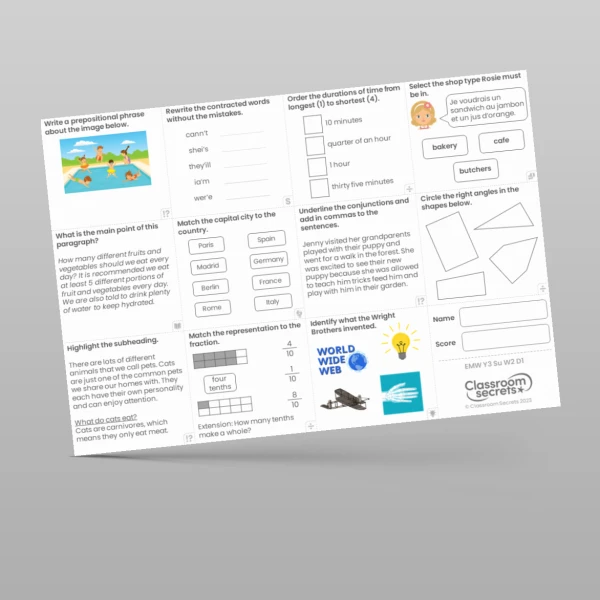

Do you want to check your children's understanding of how commas are used? Give our Key Stage 2 How is the Comma Used Test Practice A try. This resource includes four different worksheets which will allow you to test children on the different uses of commas. Questions include the use of commas in lists, to the use of commas for relative clauses and when they are used to add parenthesis. Each level of challenge includes four worksheets, to give you plenty of chances to check children's understanding throughout the year, and we've included the answers in the pack too.
Use this resource throughout Key Stage 2 to check children's knowledge of how commas are used. Alternatively, you could use this as a differentiated resource pack across different year groups too.
Curriculum Objectives
- Develop their understanding of the concepts set out in English appendix 2 by: Using fronted adverbials / Indicate grammatical and other features by: Using commas after fronted adverbials / Fronted adverbials [for example, Later that day, I heard the bad news.] / Use commas after fronted adverbials
- Indicate grammatical and other features by: Using commas to clarify meaning or avoid ambiguity in writing / Use of commas to clarify meaning or avoid ambiguity / Terminology for pupils: ambiguity
- Indicate grammatical and other features by: Using brackets, dashes or commas to indicate parenthesis / Brackets, dashes or commas to indicate parenthesis / Terminology for pupils: parenthesis / Terminology for pupils: bracket / Terminology for pupils: dash
Tags
Punctuation
4G5.6b
5G5.6a
5G5.9











